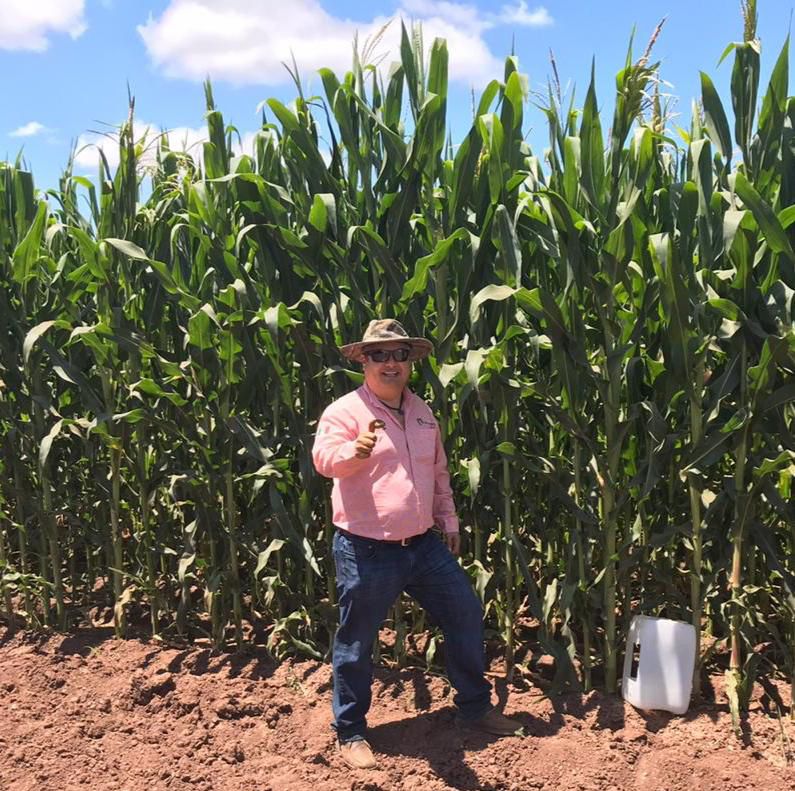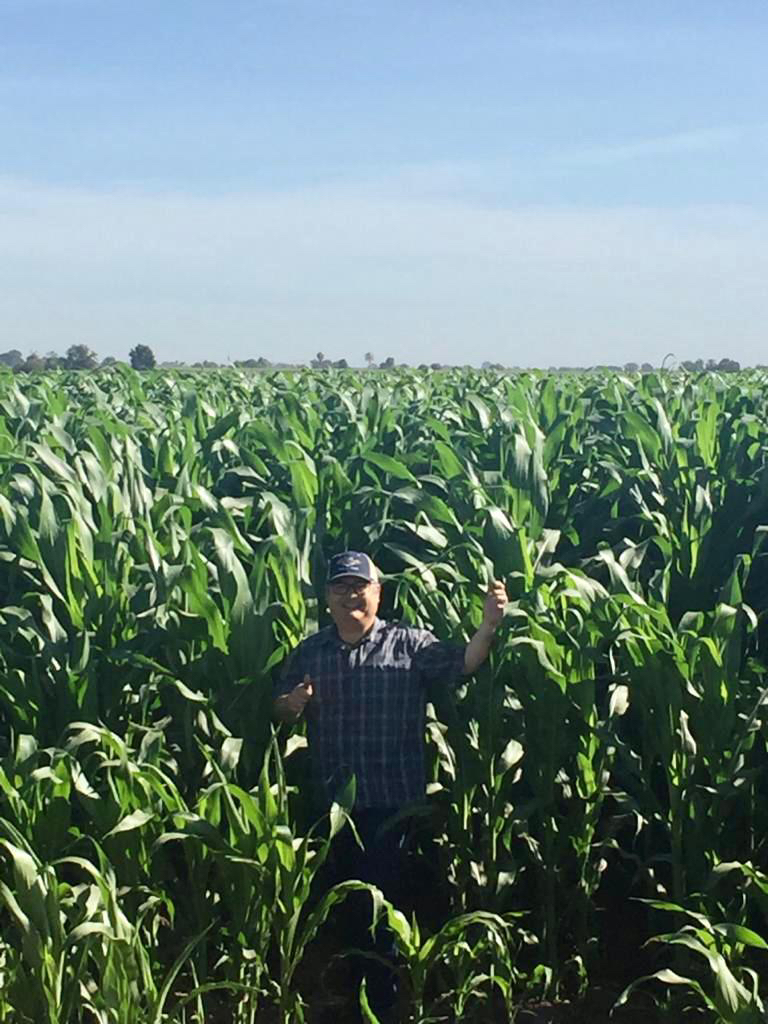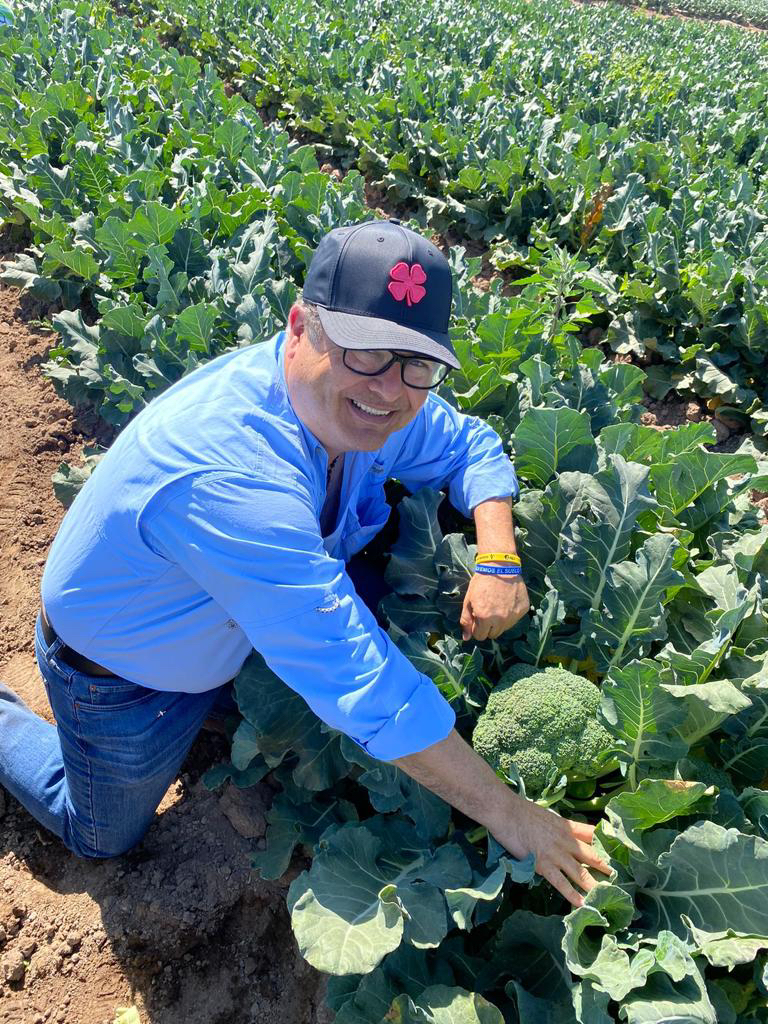My journey of listening to and rediscovering nature
Almost 500 years ago, the English philosopher Francis Bacon wrote, “Nature can only be tamed once it is obeyed.” These are words that have guided me as I have learned to cherish and respect nature.
Now more than ever I absolutely agree with Bacon’s way of thinking. But due to the close relationship I have developed with nature, I would also add that in order to know how to obey nature, it is necessary to observe it closely, understand it, and learn how to interpret its language. If it is a source of healing for humankind, why do we try to comform it in its totality to ourselves?
I would like to take this opportunity to share my journey of learning to approach agriculture in a healthy, safe, fair and sustainable manner — one that is aligned with nature and that nourishes and feeds not only people, but the soil as well, since the soil is where the magic of food production and nutrition begins.

Personal Growth
I was born 51 years ago in Ciudad Obregon, a small city in the state of Sonora in northwest Mexico. The economy there is mostly based on agriculture — primarily wheat production. I attended elementary school in my hometown, but by the age of twelve I was enrolled in a Catholic military academy in Anaheim, California. I believe it was then that my journey began, due to the fact that I was provided with an outstanding academic and disciplinary education. I also got to experience firsthand what leadership was. I realized that leadership consisted on stimulating motivation in those around us. We are not islands; we need one another in order to strive for excellence.
My time at the military academic was extremely challenging, but I eventually learned to feel comfortable in uncomfortable situations — proving my competitiveness by pushing my boundaries over and over. The military enviroment is not for everyone, though. I learned that we are all different and that we should not create expectations of others based on our own perspectives; it’s important to respect others’ opinions and points of view.
Eventually I had to go back to Mexico and continue my studies. I decided to study international finance at a very demanding university. At this point, and for the next ten years, I started to struggle with panic attacks. Anyone who has experienced this knows what I am writing about — the unexplainable feeling of fear and of anxiety, without any apparent reason, and feeling out of control.

I graduated from university, but with little emotional stability and harmony; it was more like a roller coaster — some days feeling upbeat and some days feeling massively off. I made the decision to seek professional help in order to deal with the anxiety attacks, and through this I learned a life-changing lesson: that there is no such a thing as a “magic pill” to cure or keep depression and anxiety away. Medicine does help, but it takes a lot more than just a pill to see the bright light of sunshine at the end of the darkest of nights.
After four months, even though the anxiety attacks hadn’t stopped, the therapist explained to me that the root of these symptoms was already identified and saw that I was committed to getting better. It might sound simple, but it all came down to the fact that I was so worried about the future that I forgot how to enjoy the present. As soon as I realized this, the anxiety attacks, little by little, started to fade away. Once you find yourself at ease and comfortable in your own skin, you learn that the human body speaks volumes — you just have to pay attention to it.
I consider it important to share these key moments I went through because this is exactly how we must face the challenges nature presents to us: don’t just look for a quick remedy; instead, fix the root of the problem.

Returning Quality to Nature
More than a century ago, the French Nobel prize-winning physician Alexis Carrel wrote that “quality of life is more important than life itself.” I have seen this over and over in agriculture. Farmers are always looking for the “magic recipe” to get the most out of the soil — to increase production and to get a better income — but at the same time they dismiss the consequences of their practices on the soil and the organisms that live in it.
I consider the bottom line of this issue to be the lack of carbon in soil, which leads to symptoms such as compaction, pests and disease.
Many years ago I decided that agriculture would be a promising path for making a living, so I started planting wheat. The soil I was working with wasn’t exactly known for its high quality, but I reflected on it and decided to give the soil a second chance by enriching and nourishing it with a product many consider a waste, but for me was a gift: chicken manure.
The use of manure is just one example of the functionality in this circular economy of naturally regenerating systems. It is a principle that doesn’t differ that much from the dynamic we as human beings live under — we all interact and are part of a society that provides structure. The same thing applies to the soil. It all starts with multiple and parallel exchanges that involve bacteria, fungi, microorganisms and nutrients such as proteins, carbohydrates and lipids, among others. These work together for a common purpose: to capture and store carbon.

I learned a powerful analogy about this from Dr. Kris Nichols. She said that in a business — or even ourselves — when we run out of resources or cash, our survival instincts come to the fore. This also happens with the soil: if the soil does not have the basic resources to stay alive, with quality, then everything slows down and the remaining resources reduce their flow in order to survive. However, when there is carbon, magic occurs — soils start to produce healthy plants filled with enriching nutrients. We also have to remember that the investment in the recovery process does not happen overnight. It takes time to deliver the desired outcome; some may take longer, depending on the challenges they may be facing with their soil and how long the soil had been neglected.
This represents a different challenge and process for each of us as well, given the fact that we all have different skills. Some people are quite analytical, while others are more observational. I would suggest to the oberservers to try to analize in a more thorough way what you are observing, and if you are the analytical type, to try to analyze deeper whatever is right in front of you. Working on getting to a balance of both skills allows us a better conection with nature. Just as our body gives us hints on where and how to focus our attention through symptoms and diseases, soil points out its needs — and often even the solution to these problems.
The learning curve and execution is easier said than done, but waiting for something to fall from the sky will never get us anywhere. Starting with baby steps, with a commited attitude, enables us to reverse damage and to create a healthy enviroment.
I personally thank God for what he has created and for the neverending gifts we get out of nature — and for those we are yet to discover. I also feel grateful for people like you, who have taken some of your valuable time to read this and who desire to honor nature and to give back to it.
Sergio Dabdoub is the founder and CEO of Novedades Agroicolas DASA, a leading Mexican regenerative agriculture company.














